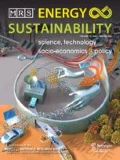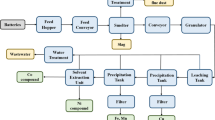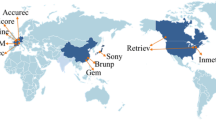Abstract
Concerted efforts by stakeholders could overcome the hurdles and enable a viable recycling system for automotive LIBs by the time many of them go out of service.
Lithium-ion batteries (LIBs) were commercialized in the early 1990s and gained popularity first in consumer electronics, then more recently for electric vehicle (EV) propulsion, because of their high energy and power density and long cycle life. Their rapid adoption brings with it the challenge of end-of-life waste management. There are strong arguments for LIB recycling from environmental sustainability, economic, and political perspectives. Recycling reduces material going into landfills and avoids the impacts of virgin material production. LIBs contain high-value materials like cobalt and nickel, so recycling can reduce material and disposal costs, leading to reduced EV costs. Battery recycling can also reduce material demand and dependence on foreign resources, such as cobalt from Democratic Republic of the Congo, where much production relies on armed aggression and child labor.
Several companies are finding ways to commercialize recycling of the increasingly diverse LIB waste stream. Although Pb-acid battery recycling has been successfully implemented, there are many reasons why recycling of LIBs is not yet a universally well-established practice. Some of these are technical constraints, and others involve economic barriers, logistic issues, and regulatory gaps. This paper first builds a case as to why LIBs should be recycled, next compares recycling processes, and then addresses the different factors affecting LIB recycling to direct future work towards overcoming the barriers so that recycling can become standard practice.













Similar content being viewed by others
References
U.S. Department of the Interior: Interior Seeks Public Comment on Draft List of 35 Minerals Deemed Critical to U.S. National Security and the Economy (press release, February 16, 2018). Available at: https://www.doi.gov/pressreleases/interior-seeks-public-comment-draft-list-35-minerals-deemed-critical-us-national.
Gaines L. and Nelson P.: Lithium-ion batteries: Examining material demand and recycling issues. Paper presented at the TMS 2010 Annual Meeting and Exhibition, Seattle, Washington, February, 2010.
Pillot C.: The rechargeable battery market and main trends 2015–2025. Paper presented at the 33rd International Battery Seminar and Exhibit, Fort Lauderdale, Florida, March 21, 2016.
Tahil W.: The Trouble with Lithium (January, 2007). Available at: http://www.evworld.com/library/lithium_shortage.pdf (accessed February 14, 2008).
Cobalt, U.S. Geological Survey, mineral commodity summaries, January, 2018. Available at: https://minerals.usgs.gov/minerals/pubs/commodity/cobalt/mcs-2018-cobal.pdf (accessed February 15, 2018).
Nickel, U.S. Geological Survey, mineral commodity summaries, January, 2018. Available at: https://minerals.usgs.gov/minerals/pubs/commodity/nickel/mcs-2018-nicke.pdf (accessed February 15, 2018).
Lithium, U.S. Geological Survey, mineral commodity summaries, January, 2018. Available at: https://minerals.usgs.gov/minerals/pubs/commodity/lithium/mcs-2018-lithi.pdf (accessed February 15, 2018).
Gaines L. and Nelson P.: Lithium-ion batteries: Possible materials issues. Paper presented at the 13th International Battery Materials Recycling Seminar, Fort Lauderdale, Florida, March, 2009.
Reaugh L.: American Manganese: VRIC Conversation with President and CEO Larry Reaugh (January 25, 2018). Available at: http://moonshotexec.com/american-manganese-vric-conversation-with-president-and-ceo-larry-reaugh/ (accessed February 14, 2018).
Data from Gallagher K. and Nelson P.: Manufacturing Costs of Batteries for Electric Vehicles. In Lithium-Ion Batteries: Advances and Applications. Available at: http://dx.doi.org/10.1016/B978-0-444-59513-3.00006-6 (accessed June 11, 2018); ch. 6.
LME, Cobalt (2018). Available at: https://www.lme.com/Metals/Minor-metals/Cobalt#tabIndex=0 (accessed March, 2018); Nickel (2018), https://www.lme.com/Metals/Non-ferrous/Nickel#tabIndex=0 (accessed March, 2018).
Qandl, London Metal Exchange: Available at: https://www.quandl.com/data/LME-London-Metal-Exchange (accessed May, 2018).
Statista: Average Lithium Carbonate Price from 2010 to 2017 in U.S. Dollars per Metric Ton. Available at: https://www.statista.com/statistics/606350/battery-grade-lithium-carbonate-price/ (accessed June 6, 2018).
Dunn J.B., Gaines L., Barnes M., Sullivan J., and Wang M.: Material and Energy Flows in the Materials Production, Assembly, and End of Life Stages of the Automotive Lithium Ion Battery Life Cycle; Report ANL/ESD/12-3; Argonne National Laboratory: Argonne, Illinois, June 2012.
Nelson P.A., Gallagher K.G., Bloom I., and Dees D.W.: Modeling the Performance and Cost of Lithium-Ion Batteries for Electric-Drive Vehicles; Report ANL-11/32; Argonne National Laboratory: Argonne, Illinois, 2011.
Argonne National Laboratory: BatPaC: A Lithium-Ion Battery Performance and Cost Model for Electric-Drive Vehicles. Available at: http://www.cse.anl.gov/batpac/index.html (accessed September, 2017).
Lee C.K. and Rhee K.I.: Preparation of LiCoO2 from spent lithium-ion batteries. J. Power Sources 109, 17–21 (2002). Available at: https://doi.org/10.1016/S0378-7753(02)00037-X (accessed August 22, 2018).
Shi Y., Chen G., and Chen Z.: Effective regeneration of LiCoO2 from spent lithium-ion batteries: A direct approach towards high-performance active particles. Green Chem. 20(4), 851–862 (2018). Available at: https://doi.org/10.1039/C7GC02831H (accessed August 22, 2018).
Farasis Energy, Inc.: Direct Recycling Technology for Plug-In Electric Vehicle Lithium-Ion Battery Packs; Report CEC-500-2016-016; California Energy Commission: Sacramento, California, March, 2015. Available at: https://www.coursehero.com/file/17965992/Direct-recycling-5/ (accessed August 22, 2018).
Sloop S.: Advances in direct recycling of Li-ion batteries. Presentation at the NAATBatt Recycling Workshop, Ann Arbor, Michigan}, November 30, 2016. Available at: http://naatbatt.org/wp-content/uploads/2016/12/ONTO_NAATBaat_2016b.pdf (accessed August 22, 2018).
Gaines L.: Lithium-ion battery recycling processes: Research towards a sustainable course. Sustainable Mater. Technol. 17 (2018). Available at: https://doi.org/10.1016/j.susmat.2018.e00068 (accessed August 23, 2018).
SAE International: Identification of Transportation Battery Systems for Recycling Recommended Practice, J2984_201308 (August, 2013).
Battery Association of Japan: Recycling Portable Rechargeable Batteries. Available at: http://www.baj.or.jp/e/recycle/recycle04.html (accessed April 19, 2018).
Binks S.: Lead, lithium recycling mix: A clear and present danger. In Batteries International (Spring, 2015); p. 12. Available at: https://www.ila-lead.org/UserFiles/File/Newsletter%20files/Lithium%20battery%20safety%20-%20Batteries%20International.pdf (accessed June 11, 2018).
Epoch Times: Recycling Plant Releases Video of Fire to Discourage Throwing Away Batteries (2017). Available at: https://www.theepochtimes.com/recycling-plant-releases-video-of-fire-to-discourage-throwing-away-batteries_2395520.html (accessed June 6, 2018).
McCarthy S.: Lithium Batteries Ignite Small Fires inside Linn County Landfill (KCRG-TV9, June 2, 2016). Available at: http://www.kcrg.com/content/news/Lithium-batteries-ignite-small-fires-inside-Linn-County-landfill-381726241.html (accessed June 6, 2018).
SAE International: Automotive Battery Recycling Identification and Cross Contamination Prevention. J3071_201604 (April, 2016).
USABC: Recommended practice for recycling of xEV electrochemical energy storage systems (2014). Available at: http://www.uscar.org/guest/teams/12/U-S-Advanced-Battery-Consortium-LLC (accessed January 14, 2018).
Coy T. (Kinsbursky Brothers): Personal communication with L. Gaines (2015).
Targray: White Paper: Hydrophilic Binder Performance in Li-ion Batteries (March 13, 2017). Available at: https://www.targray.com/articles/hydrophilic-binder (accessed February 12, 2018).
European Commission: Directive 2006/66/EC of the european parliament and of the council of 6 September 2006 on batteries and accumulators and waste batteries and accumulators and repealing directive 91/157/EEC. Official Journal of the European Union L 266/1 (26 September 2006).
Webster H.: Fire Protection for the Shipment of Lithium Batteries in Aircraft Cargo Compartments; Report DOT/FAA/AR-10/31; Federal Aviation Administration: Washington, DC, November, 2010.
Mikolajczak C., Kahn M., White K., and Long R.T.: Lithium-Ion Batteries Hazard and Use Assessment (Springer, New York, 2011); pp. 31–42.
European Power Tool Association: Shipping Lithium Ion Batteries for Cordless Power Tools and Electric Garden Equipment: Implementation of Dangerous Goods Transport Regulations (2017).
Ministry of Industry and Information Technology; Ministry of Science and Technology; Ministry of Environmental Protection; Ministry of Transport; Ministry of Commerce; General Administration of Quality Supervision, Inspection and Quarantine; National Energy Administration, Provisional Regulation on the Recycling and Reuse of Traction Batteries from New Energy Vehicles (NEVs) (January 2018); http://www.xinhuanet.com/english/2018-02/27/c_137001646.htm (accessed May 23, 2018).
Vimmerstedt L.J., Ring S., and Hammel C.J.: Current Status of Environmental, Health, and Safety Issues of Lithium-Ion Electric Vehicle Batteries; Report NREL/TP-463-7673; National Renewable Energy Laboratory: Golden, Colorado, 1995.
Bielewski M.: New EU law is coming: Revision of the directive 2006/66/EU on batteries. Paper presented at the International Discussion on Lithium-Ion Battery Recycling, Golden, Colorado, May 30–31, 2018.
European Union: Directive 2000/53/EC of the European Parliament and of the Council on End-of-Life Vehicles (September 18, 2000).
Richa K., Babbitt C., and Gaustad G.: Eco-efficiency analysis of a lithium-ion battery waste hierarchy inspired by circular economy. J. Ind. Ecol. 21(3), 715–730 (2017).
Wang X., Gaustad G., Babbitt C.W., and Richa K.: Economies of scale for future lithium-ion battery recycling infrastructure. Resour., Conserv. Recycl. 83, 53–62 (2014).
Gratz E., Sa Q., Apelian D., and Wang Y.: A closed loop process for recycling spent lithium ion batteries. J. Power Sources 262, 255–262 (2014).
Heelan J., Gratz E., Zheng Z., Wang Q., Chen M., Apelian D., and Wang Y.: Current and prospective Li-ion battery recycling and recovery processes. JOM 68(10), 2632–2638 (2016).
Georgi-Maschler T., Friedrich B., Weyhe R., Heegn H., and Rutz M.: Development of a recycling process for Li-ion batteries. J. Power Sources 207, 173–182 (2012).
Dewulf J., van der Vorst G., Denturck K., van Langenhove H., Ghyoot W., Tytgat J., and Vandeputte K.: Recycling rechargeable lithium ion batteries: Critical analysis of natural resource savings. Resour., Conserv. Recycl. 54(4), 229–234 (2010).
Richa K., Babbitt C.W., Gaustad G., and Wang X.: A future perspective on lithium-ion battery waste flows from electric vehicles. Resour., Conserv. Recycl. 83, 63–76 (2014).
USGPO, Public Law 104–142: Mercury Containing and Rechargeable Battery Management Act (1996). Available at: www.gpo.gov/fdsys/pkg/PLAW-104publ142/content-detail.html (accessed May 23, 2018).
Kang D.H.P., Chen M., and Ogunseitan O.A.: Potential environmental and human health impacts of rechargeable lithium batteries in electronic waste. Environ. Sci. Technol. 47(10), 5495–5503 (2013).
Eurofins: Federal and State Hazardous Waste Criteria (2012). Available at: www.eurofinsus.com/media/161417/hazardous_waste_regulatory_limits.pdf (accessed May 23, 2018).
Rechargeable Battery Recycling Act of 2006 (California Code, Chapter 8.4, 42451 to 42456, 2006).
New York State Rechargeable Battery Law, New York environmental conservation law. In Title 18. Rechargeable Battery Recycling (27–1081 to 27–1811, 2010).
Product Stewardship for Rechargeable Batteries (Minnesota Pollution Control Agency, Saint Paul, 2015).
Call2Recycle: What Can I Recycle? (2018). Available at: www.call2recycle.org/what-can-i-recycle/ (accessed May 23, 2018).
California Legislative Information: AB-2832 Recycling and Reuse: Lithium-Ion Batteries (2018). Available at: http://leginfo.legislature.ca.gov/faces/billTextClient.xhtml?bill_id=201720180AB2832 (accessed May 23, 2018).
California Legislative Information: AB-2407 Recycling: Lithium-Ion Vehicle Batteries. Advisory Group. Available at: https://leginfo.legislature.ca.gov/faces/billTextClient.xhtml?bill_id=201720180AB2407 (accessed May 23, 2018).
Harland L.: The dirty effects of clean energy technology: Supportive regulations to promote recycling of lithium ion vehicle batteries. San Diego J. Climate & Energy Law 7, 167–188 (2016). Available at: http://heinonline.org/HOL/LandingPage?handle=hein.journals/sdjclimel7&div=8&id=&page= (accessed May 23, 2018).
Gaines L.: The future of automotive lithium-ion battery recycling: Charting a sustainable course. Sustainable Mater. Technol. 1–2, 2–7 (2014).
Acknowledgments
This work was sponsored primarily by the U.S. Department of Energy’s Office of Vehicle Technologies. The submitted article was created by UChicago Argonne, LLC, Operator of Argonne National Laboratory ("Argonne"). Argonne, a U.S. Department of Energy Office of Science laboratory, is operated under Contract No. DE-AC02-06CH11357. The U.S. Government retains for itself, and others acting on its behalf, a paid-up nonexclusive, irrevocable worldwide license in said article to reproduce, prepare derivative works, distribute copies to the public, and perform publicly and display publicly, by or on behalf of the Government.




